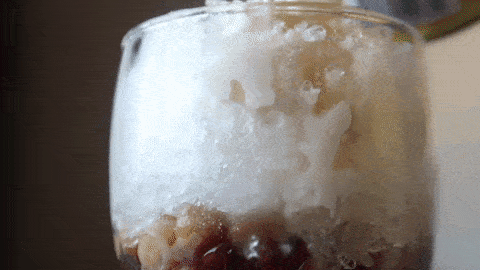
Source: geoffreview.com
The beloved summer treat Halo-halo is like an unofficial symbol of summer in the Philippines. The longing for something cold and refreshing under the sweltering heat, the sweet and surprising flavor bombs that remind us of happy times is what this colorful concoction brings to the table.
Halo-halo, simply translated as mix-mix, is made up of seemingly simple ingredients – shaved ice, evaporated milk, sugar, pinipig (toasted flattened rice), an assortment of sweet and chewy red and white beans, and fruits that include bananas, kaong (sweet palm), langka (jackfruit), macapuno (coconut sport), nata de coco (coconut gel). And for kids and adults alike, the pièce de résistance would often be a scoop of ube ice cream, ube halaya, or chunk of leche flan on top. To the untrained eye, this concoction looks and sounds like one unappealing mess, like throwing everything but the kitchen sink. Somehow, everything works. The dominant sweet taste in varying degrees is tempered by the shaved ice as well as the hints of sourness from the fruits’ acid. The salt and fat from the evaporated milk, meanwhile, enhance the flavors into one silky blend of summer indulgence.
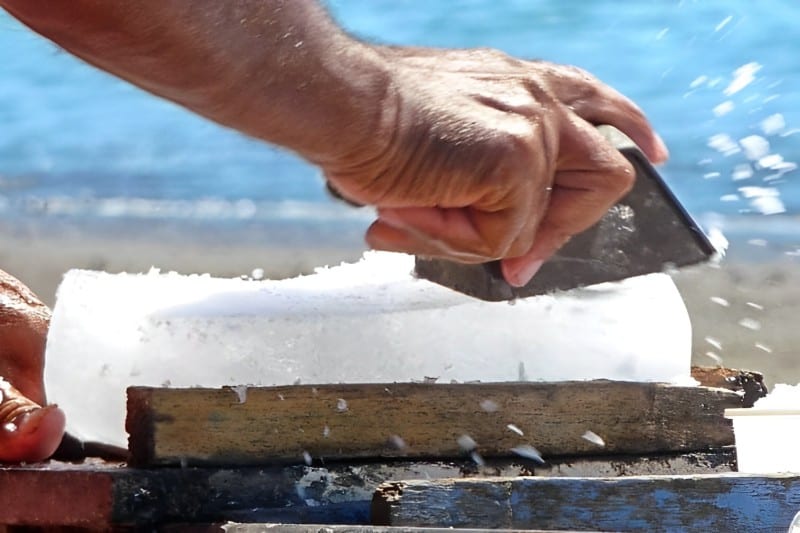
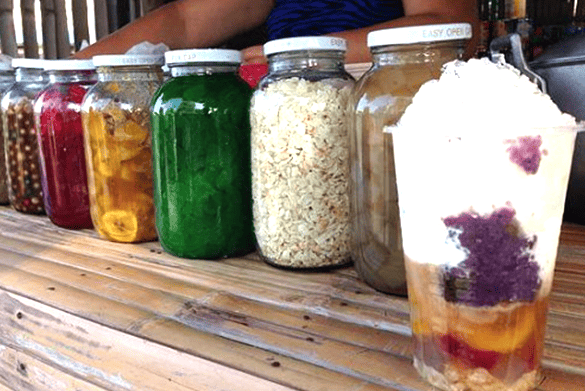
Photo credits: happyshaveice.com and angsaraprecipe.com
Halo-halo evokes childhood memories of eagerly waiting for the afternoon break time to come, just so one could run out and get in line as neighborhood vendors set up tables with jars and containers full of assorted ingredients that make up this colorful dessert. And part of the experience was the utter dread of seeing the containers empty out one by one or the last sliver of melting ice disappear under the manual ice scraper as you pray to get in front to order.
An edible rainbow in a glass, part of what makes the halo-halo an endearing icon of Filipino identity is the labor of love that goes into making a traditional halo-halo. Most of the classic ingredients back then were homemade, such as the sweet potato, leche flan, and ube halaya (purple yam), including sweetened fruits and sago (like tapioca pearls, but made of starch from tropical palm stems). While the gelatin in various colors were tasteless, they added to the visual delight of the dessert. All these took considerable hours to prepare during all those hot summer days. These days, many food establishments have halo-halo as a regular offering, with pre-measured pieces and machine-processed ice on hand. Almost all the typical ingredients can be bought ready to eat from the grocery. There are now dozens of iterations of this beloved Filipino delight, from the type of milk used, the number and variety of ingredients, down to the texture of the shaved ice.
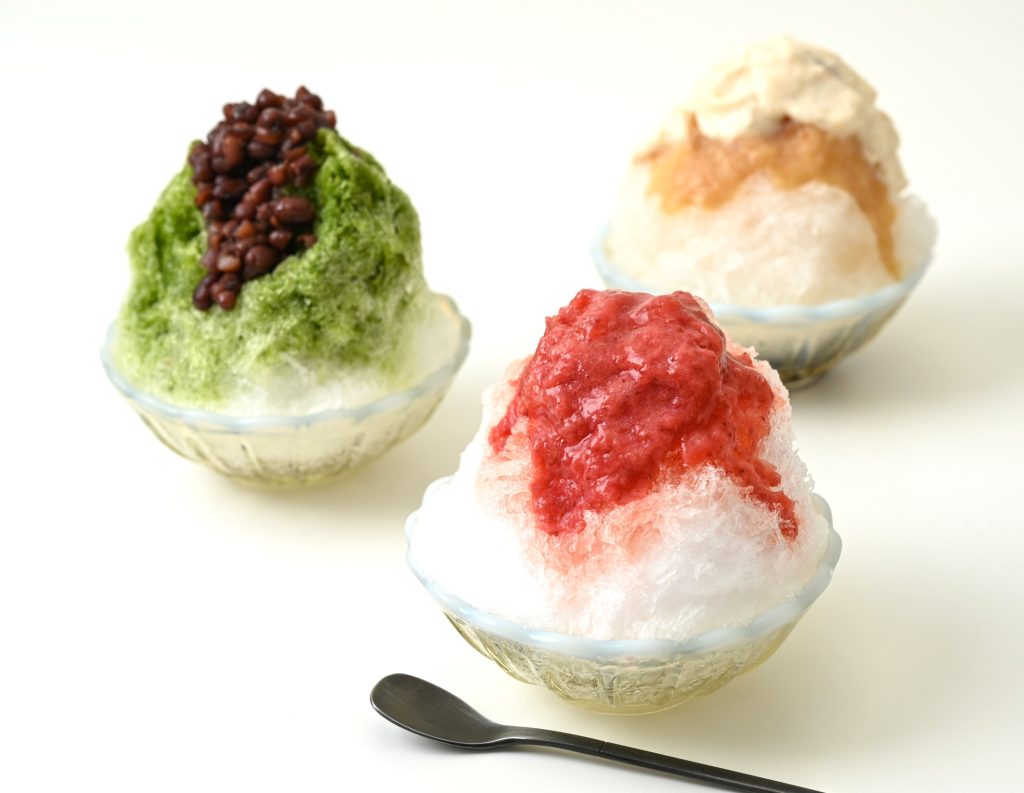
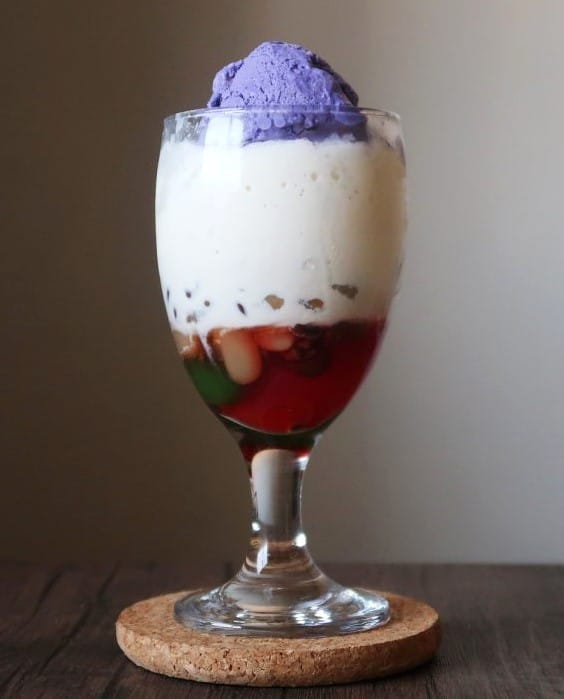
The kakigori, the Japanese flavored shaved ice dessert, is highly considered to be the inspiration for the Filipino halo-halo. (Photo credits: edotokyokirari.jp and geoffreview.com)
Regardless of the numerous interpretations and deconstructed preparations, what makes the halo-halo iconic is the coming together of singular prominent desserts to make one humble yet cultural food identity. Amidst all these combinations, chaotic or tempered, lies the familiarity of the individual ingredients. Yet, a deeper dive into how these colorful sweet pieces are made makes for a better appreciation for Filipino ingredients. For instance, the kaong, the smooth chewy white gems that look like manufactured jelly beans, is a naturally harvested fruit called sugar palm from its namesake tree that grows in the Philippines and other tropical countries. It takes years for trees to mature and eventually start to flower to produce the kaong seeds. Made from scratch, after harvest and cleaning, it is boiled for at least 2-3 hours, then cooked further in sugar and water. As for the ube halaya, while there is relatively a quick prep and cooking period (about an hour), it is a strenuous activity with the constant stirring until it reaches its peak creamy texture.
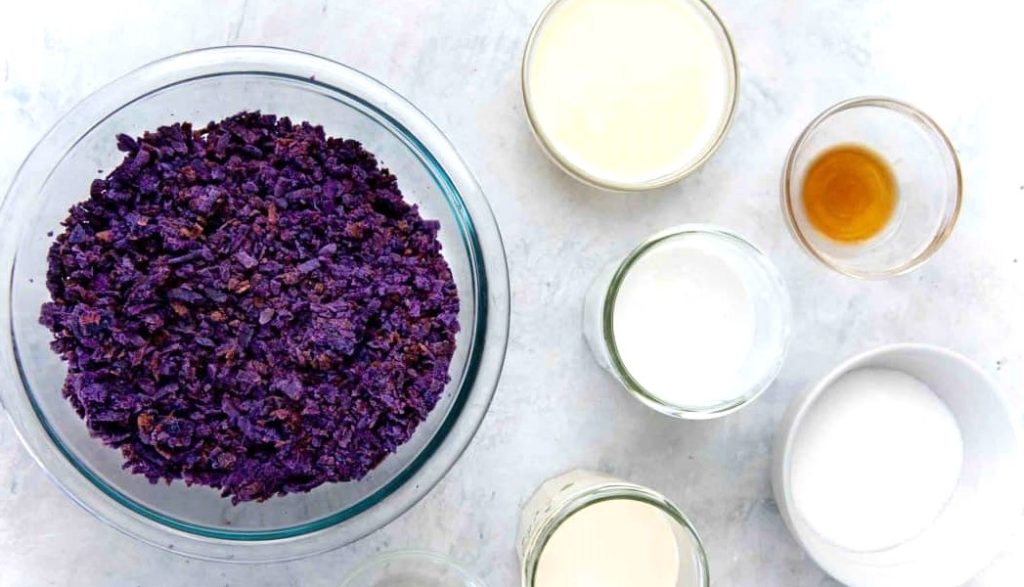
(Photo credit: theflavorbender.com)
Behind all the complexities of making many of the individual food ingredients, the Filipino halo-halo is laid back and reliable. The attraction stems from the easy relatability of the ingredients, an open invite to any Filipino or anyone for that matter, to enjoy and share a piece of their culture and experiences with others without having to explain anything.
Hailed among the best frozen desserts in the world, one can easily make halo-halo in one’s own kitchen. For those pressed for time but still want their own spin on this refreshing dessert, you can get many of the ready-made-ingredients and more interesting food options online or at many Asian food markets. And if you happen to be in the Philippines in the summertime, you can easily spend a day or two for a unique salu-salo to find the best flavors in food and ingredients at IFEX Philippines 2024.
The IFEX Philippines trade show will be held from May 10 to 12, 2024 at the World Trade Center Metro Manila in Pasay City.

Recent Comments